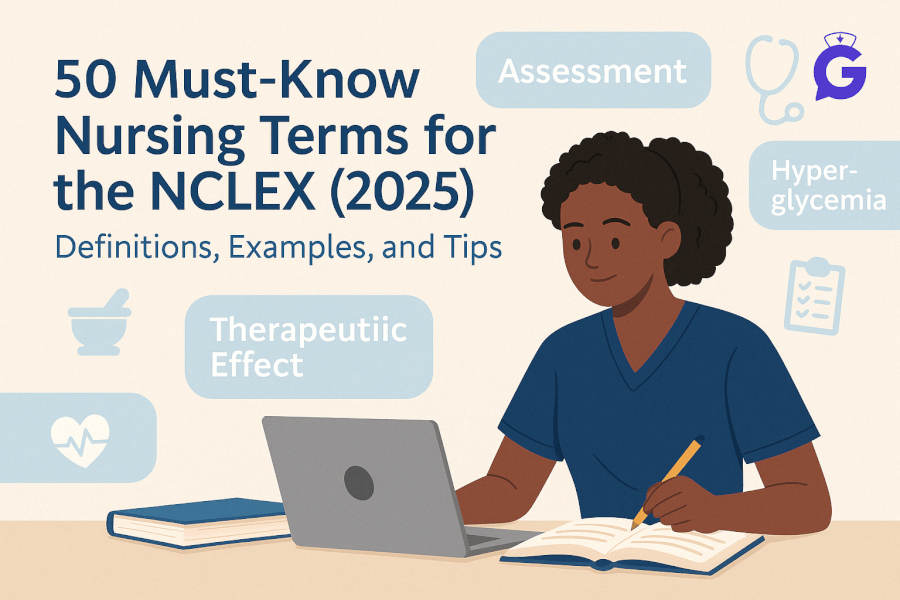The National Council Licensure Examination (NCLEX) is a pivotal milestone for aspiring nurses, serving as a gateway to professional practice. As healthcare continues to evolve, so too does the NCLEX, incorporating technological advancements that reflect modern nursing practices. This article delves into the innovations in the NCLEX and the broader impact of technology on nursing, providing a comprehensive overview for current and future nurses.
The Evolution of the NCLEX
Computerized Adaptive Testing (CAT)
One of the most significant technological advancements in the NCLEX is the implementation of Computerized Adaptive Testing (CAT). Introduced in 1994, CAT tailors the difficulty of questions to the test-taker's ability level. This method ensures a more accurate assessment of a candidate's competency. As a result, the NCLEX can determine with greater precision whether a candidate has the necessary knowledge and skills to practice safely and effectively.
Enhanced Test Security
Technology has also bolstered the security of the NCLEX. Advanced biometric systems, such as fingerprint scanning and facial recognition, are now standard at testing centers. These measures prevent impersonation and ensure that the individual taking the exam is indeed the registered candidate. Additionally, sophisticated algorithms detect patterns of cheating, safeguarding the integrity of the examination process.
Digital Resources and Study Tools
The digital age has revolutionized how candidates prepare for the NCLEX. Online platforms offer a plethora of resources, including practice questions, interactive simulations, and video tutorials. Mobile apps provide on-the-go study options, allowing candidates to review material anytime, anywhere. These tools not only enhance learning but also accommodate diverse learning styles, making preparation more effective and accessible.
The Impact of Technology on Modern Nursing Practices
Electronic Health Records (EHRs)
Electronic Health Records (EHRs) have transformed patient care by providing real-time access to patient information. Nurses can quickly retrieve medical histories, lab results, and treatment plans, facilitating more informed decision-making. EHRs also improve communication among healthcare providers, reducing the risk of errors and enhancing patient safety.
Telehealth
Telehealth has emerged as a vital component of modern healthcare, especially in the wake of the COVID-19 pandemic. Through telehealth platforms, nurses can conduct virtual consultations, monitor patients remotely, and provide education and support. This technology expands access to care, particularly for patients in rural or underserved areas, and allows for continuous monitoring of chronic conditions.
Wearable Technology
Wearable devices, such as smartwatches and fitness trackers, are increasingly integrated into patient care. These devices monitor vital signs, physical activity, and other health metrics, providing valuable data that nurses can use to assess and manage patient health. Wearable technology promotes proactive care, enabling early detection of potential health issues and timely interventions.
Simulation-Based Training
Simulation-based training has become a cornerstone of nursing education. High-fidelity simulators replicate real-life clinical scenarios, allowing nursing students to practice skills and make decisions in a safe, controlled environment. This hands-on experience builds confidence and competence, better preparing students for the complexities of clinical practice.
Artificial Intelligence (AI) and Machine Learning
Artificial Intelligence (AI) and machine learning are making inroads into nursing practice. AI-powered tools can analyze vast amounts of data to identify patterns and predict patient outcomes. For example, predictive analytics can help nurses identify patients at risk for complications, enabling early interventions. AI also supports administrative tasks, such as scheduling and documentation, freeing up nurses to focus more on patient care.
Preparing for the Future: Embracing Technological Competence
As technology continues to shape the landscape of healthcare, nurses must develop technological competence to remain effective in their roles. Nursing curricula are increasingly incorporating technology training, ensuring that graduates are proficient in using EHRs, telehealth platforms, and other digital tools. Continuing education and professional development opportunities also help practicing nurses stay current with technological advancements.
The Role of the NCLEX in Technological Competence
The NCLEX reflects the integration of technology in nursing practice by including questions related to informatics, telehealth, and other technological aspects of care. Candidates are tested on their ability to use technology to enhance patient safety, improve care quality, and streamline workflows. By aligning the exam with modern practices, the NCLEX ensures that new nurses are equipped to navigate the technologically advanced healthcare environment.
Conclusion
The integration of technology into the NCLEX and nursing practice represents a significant shift towards a more efficient, effective, and patient-centered healthcare system. From computerized adaptive testing to telehealth and AI, these innovations enhance the quality of care and prepare nurses for the demands of modern practice. As technology continues to evolve, so too will the NCLEX and the nursing profession, driving continuous improvement in patient outcomes and healthcare delivery.
By staying informed about these advancements and embracing technological competence, nurses can thrive in their careers and contribute to the ongoing transformation of healthcare.







